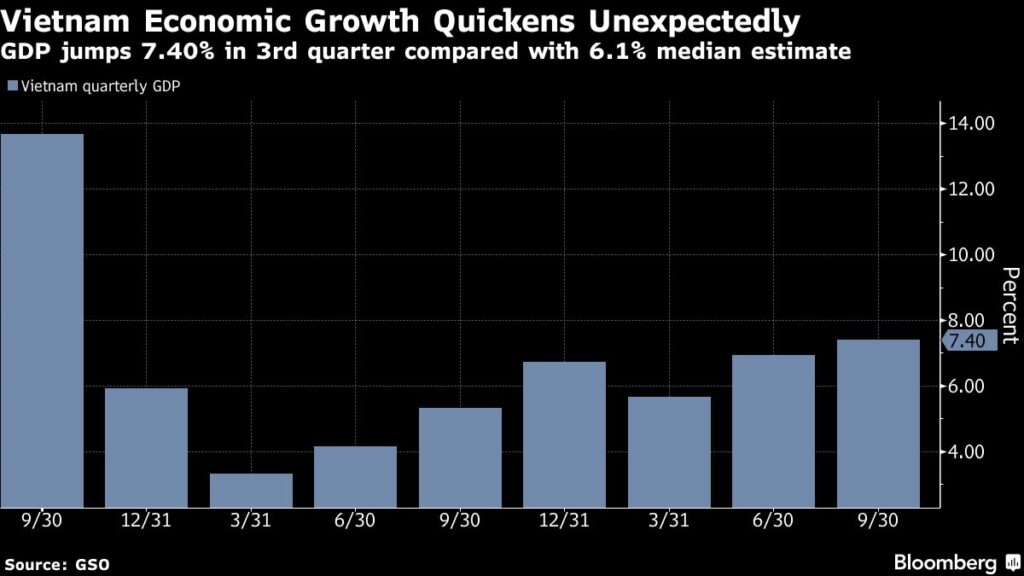Vietnam’s economic outlook, as presented by Prime Minister Pham Minh Chinh, indicates ambitious growth targets, with expectations of a 6.5% to 7% economic expansion by 2025. Chinh made these projections during his presentation to the National Assembly, emphasizing the government’s commitment to an even more aggressive growth rate of 7% to 7.5% beyond 2025. The optimism follows a solid growth performance, with Vietnam achieving a 7.4% increase in GDP in the third quarter of this year. This growth is crucial as the nation attempts to stabilize inflation while simultaneously enhancing economic momentum in the wake of challenges, including recovery efforts from Super Typhoon Yagi, which resulted in significant loss of life and substantial economic damage.
The government’s initiative seeks to balance these growth ambitions with a manageable inflation target of approximately 4.5% for 2025. This is part of a broader strategy to maintain economic stability while pursuing development goals. The forecast reflects Vietnam’s reliance on exports and its dynamic economic model, which has become a critical aspect of its resilience, particularly in global markets. Despite facing external economic pressures and a challenging regional environment, the government’s proactive stance aims to create favorable conditions for businesses to thrive.
Chinh’s confidence contrasts with the outlook provided by the International Monetary Fund (IMF), which projects a more conservative growth rate of 6.1% for Vietnam in 2025. The divergence in these forecasts highlights the government’s intention to foster a more optimistic narrative regarding the national economy. Engaging with international financial institutions for input and support, Vietnam’s leaders are working to recalibrate the economy in ways that position it favorably on the world stage, focusing on measures that would further stimulate investment and trade.
In terms of individual economic indicators, the Prime Minister noted that Vietnam’s GDP per capita is expected to rise to around $4,900 by 2025. This figure signals a substantial increase from previous years and points to the government’s focus on enhancing the quality of life for its citizens as part of overall economic growth. Additionally, the government has set a target to elevate the national economy’s size to between $780 billion and $800 billion by 2030, reflecting broader ambitions to evolve Vietnam into a middle-income country.
The State Bank of Vietnam recently communicated its willingness to consider lowering policy interest rates to provide businesses with greater access to capital, especially in response to the recent devastating impacts of Typhoon Yagi. The Deputy Governor of the central bank emphasized the need to support the economy by easing borrowing conditions, which could provide the impetus necessary for both recovery and sustained growth.
In summary, Vietnam’s strategic approach under Prime Minister Chinh aims to foster an optimistic economic landscape characterized by robust growth projections, manageable inflation, and enhanced per capita income. As the nation seeks to rebound from recent adversities while laying the groundwork for sustainable development, these goals signify not just resilience in the face of challenges but an overarching commitment to advancing Vietnam’s economic positioning in the global arena.

